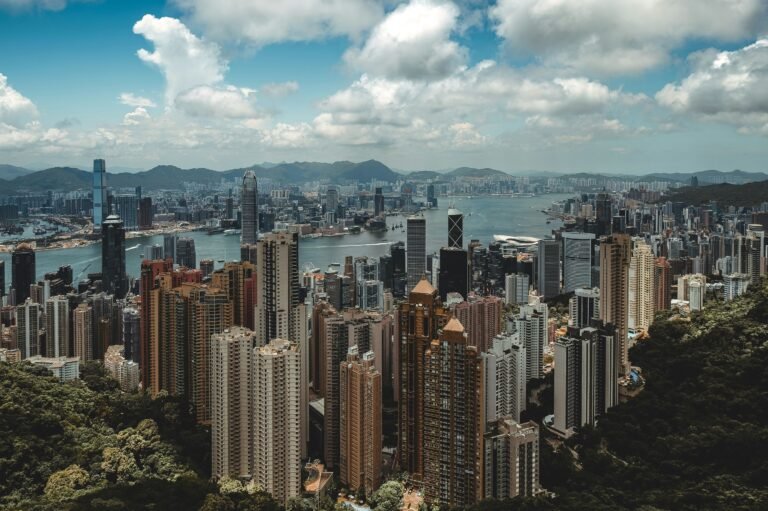10 Famous Chinese Temples You Must Visit
Table of Contents
China has the world’s oldest civilization and many Buddhist temples. When you enter one of these Chinese temples, time stops. Since the structure was meticulously built, Buddhism has been practiced here. Since Buddhists believe time never ends, that makes sense. Explore China’s zen gardens to immerse yourself in centuries-old heritage.
Lingyin Temple
Lingyin Temple is entered via the ceremonial Hall of the Heavenly Kings. Chan Buddhists have lived in the Wuling Mountains for generations. The Temple of the Soul’s Retreat and its hilly surroundings are famous. You must pay to enter the hilly Lingyin-Feilai Feng Scenic Area with bridges, monuments, sculptures, caves, artwork, and pavilions.
It is one of China’s most prominent and wealthiest temples. Elegant grottoes on the monastery grounds show it. The vast temple has the Grand Hall of the Great Sage, Medicine Buddha Hall, Sutra Library, Huayan Hall, and Five Hundred Arhat Hall.
Nanshan Temple

Nanshan Temple is China’s most significant Buddhist sacred site since the PRC foundation. A shimmering 100-meter (350-foot) white monument stands on a rocky promontory in Sanya’s South Sea. The whole temple grounds revolve around this figure.
Ornate white spires surround the main entry plaza, which leads to the monument in the water via a broad promenade flanked by a gorgeous pond and a clump of woodlands. The promenade draws attention to the spectacular three-sided monument.
White Horse Temple
According to legend, the White Horse Temple was China’s earliest Buddhist temple. Built in 68 AD, it is beyond the Eastern Han capital’s boundaries. Western visitors may quickly arrive since all signage is in Mandarin and English.
The main temple was renovated throughout the Ming and Qing eras, the 1950s, and lastly in 1973 following the Cultural Revolution. This stunning temple has several rooms with groomed gardens and galleries. Beautiful sculptures include the two mythological lions at the entryway, the Jade Buddha, and the renowned Śākyamuni and Maitreya Buddhas.
Big Wild Goose Pagoda
The Big Wild Goose Pagoda in southern Xi’an, Shaanxi Province, is seven floors tall. It originally had five stories and was restored multiple times. The famed Buddhist explorer Xuanzang brought Buddha sutras, sculptures, and figurines from India to the structure, among other things. The temple is worth seeing, as its antique structure soars above contemporary surroundings, even if its interior is tiny. Another outdoor mall to the south is worth seeing.
Longmen Cave Temples
In Henan province, limestone cliffs with 2,300 caverns span over a mile. The caverns include some of the best Northern Wei and Tang Dynasty (316-907) Chinese paintings. To view all 110,000 sculptures, 60 stupas, and 2,800 inscriptions, climb metal and limestone steps to the caverns on the cliff. The hillside limestone is used to chisel statues and Buddhas. Each cave is a walkable ornate relief. This Yi River-side engraved cliff is remarkably maintained.
Lama Temple
Discover the stunning Lama Temple in Beijing, in the heart of Buddhism. Emperor Yong Zheng’s old palace became a lamasery in 1744. If you only visit one Chinese temple, visit the Lama Temple. It is the most renowned Tibetan Buddhist Temple outside Tibet and has a good reason.
In one of China’s largest towns, the Lama Temple has stunning paintings, a Tibetan 18-meter (60-foot) Buddha, tantric statues, archways, handcrafted woodwork, and beautiful roofing. Split across five grand halls, you might spend days admiring the beauty.
Shaolin Temple

The 1,500-year-old Shaolin School of Buddhism worships in the Shaolin Temple. Over the ages, the temple and school have been attacked, most recently by fire in 1928. Each hall has been updated for tourists. Every day, selfie-seekers flood this commercialized shrine. Any martial artist should visit Shaolin, which is known for its kung fu. The Wu Shu training facility is impressive. Kung fu beginners will shatter boards and tumble for the onlookers in the yard.
Jokhang
Walk past Buddhist pilgrims prostrating outside Tibet’s central Jokhang Temple. They pray at the foot of the world’s most venerated Buddha image, the 1,300-year-old center golden Buddha statue. The Gelug School runs the temple. However, all Buddhist sects may worship here. The two-story temple has a maroon and gold interior under its gold dome. Visit in the morning when pilgrims consume yak butter, and the temple is open. The temple’s midday portion is only seen via grates.
Hanging Monastery
Built onto a 75-meter-high cliff, the Hanging Monastery lives up to its name. Stilts embedded in the cliffside support beautiful Buddhist prayer structures. Narrow bridges and little passageways connect these religious sites, but you may only visit briefly. Many tourists have weakened the structures’ foundations.
Visitors will soon be banned from the Hanging Monastery for safety reasons. Hengshan was erected in 491. Its longevity makes it an architectural marvel. If you’re blocked, don’t worry. The temple is typical. This temple is remarkable for its perilous structures cut into the rock.
Temple Of Heaven
The most renowned Chinese temple, the Temple of Heaven, is an altar. There are no monks, worshipers, or incense here. Beijing has impressive architecture in the center. The walled garden has four compass entrances. The indoor garden is maintained straight to remove natural blemishes—the temple halls tower above the garden. The structures are spherical, with square foundations representing the old notion that heaven was round and earth was square.
The park’s showpiece is the Hall of Prayer for Good Harvests, with its triple-eaved purplish-blue umbrella ceiling and three-tiered marble patio. Echo walls, where a whisper can be heard from both ends, attract tourists. The Confucian complex was created for the “Son of Heaven” monarch, who prayed for his people’s well-being at the altar.
For more travel inspiration, tips, and destination guides, explore our travel blog and start planning your next adventure!




